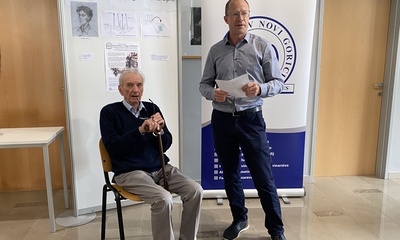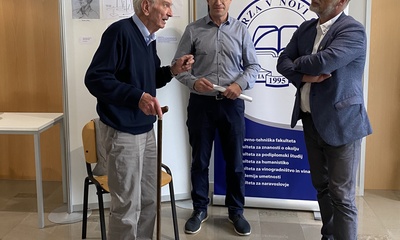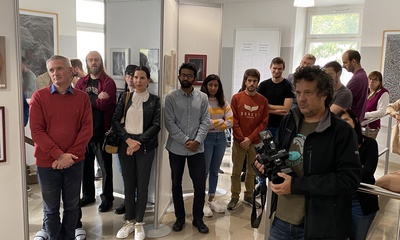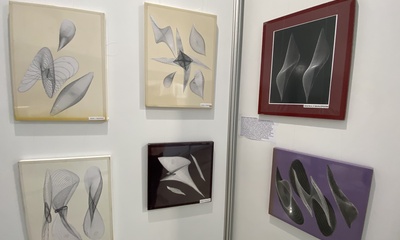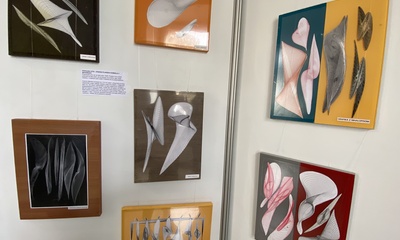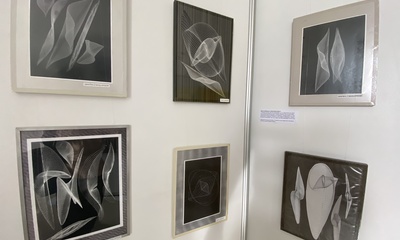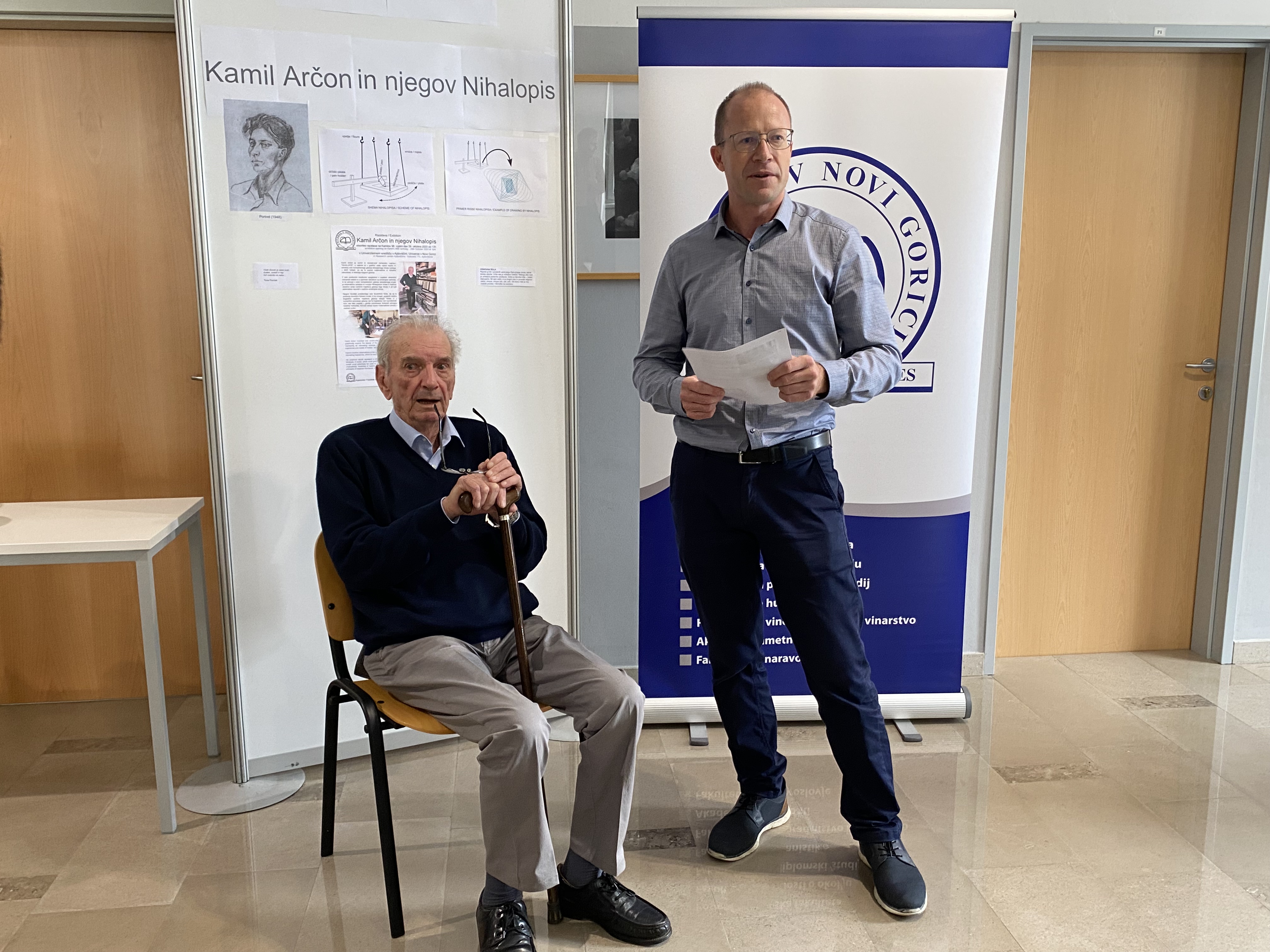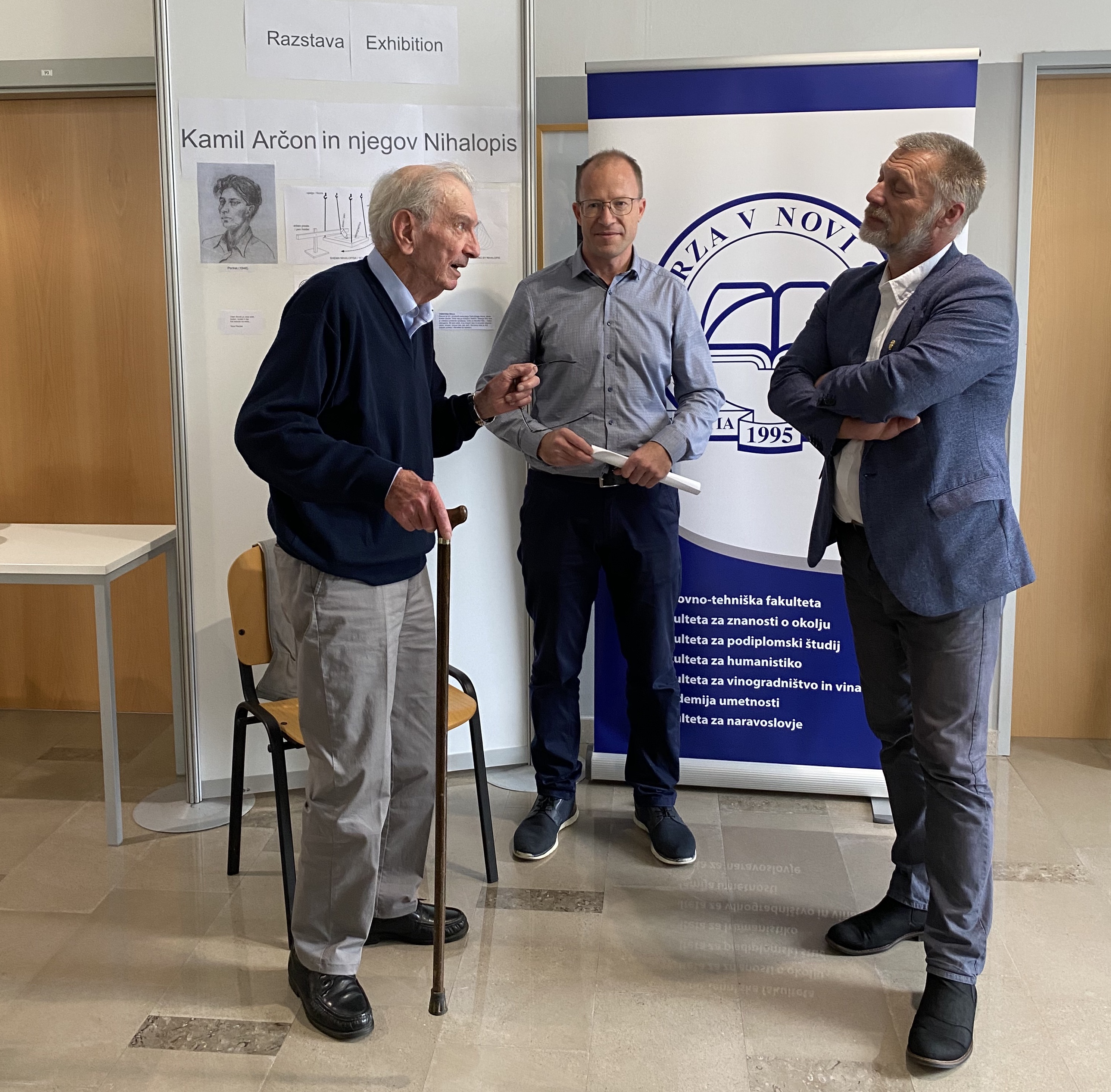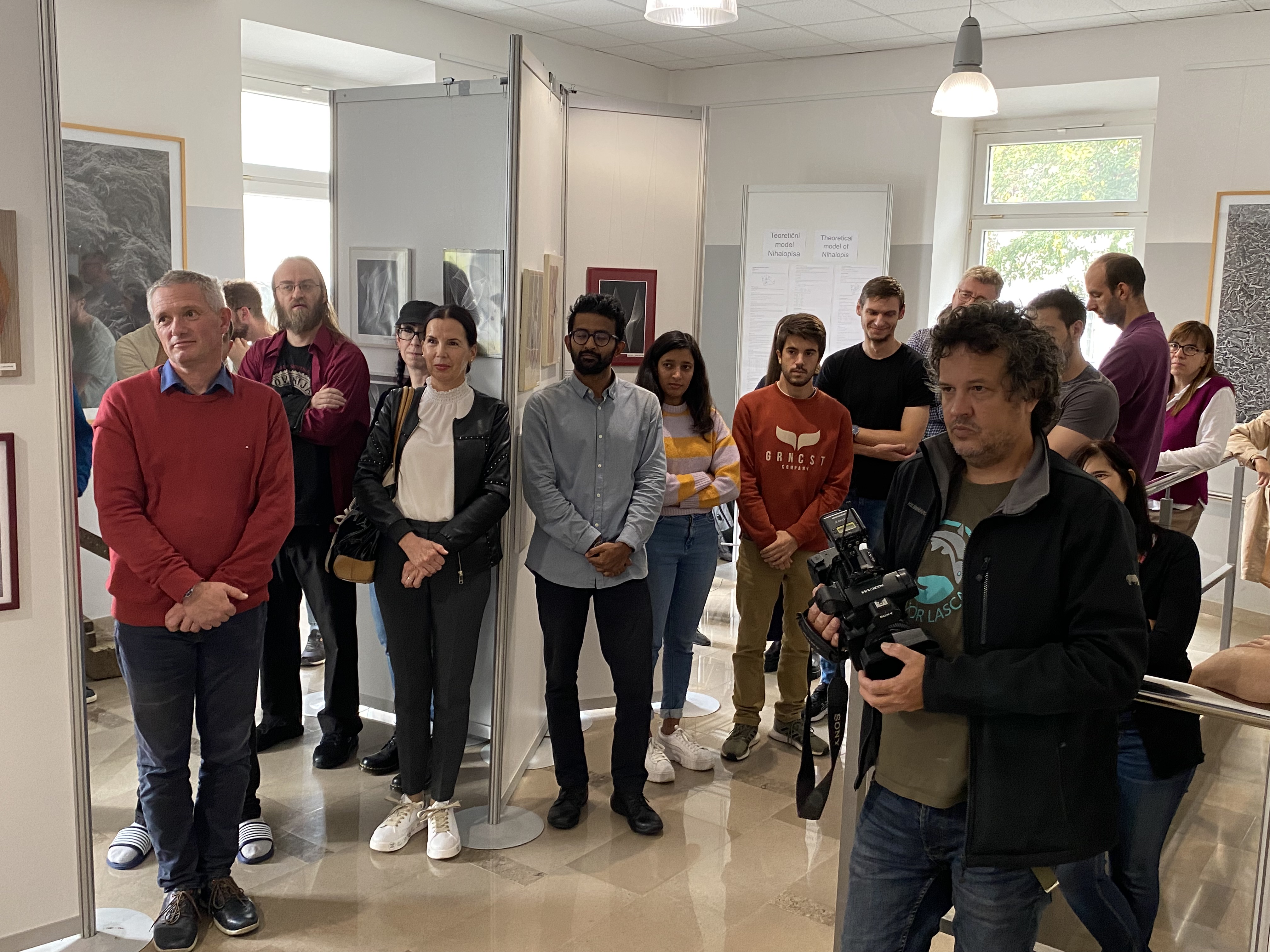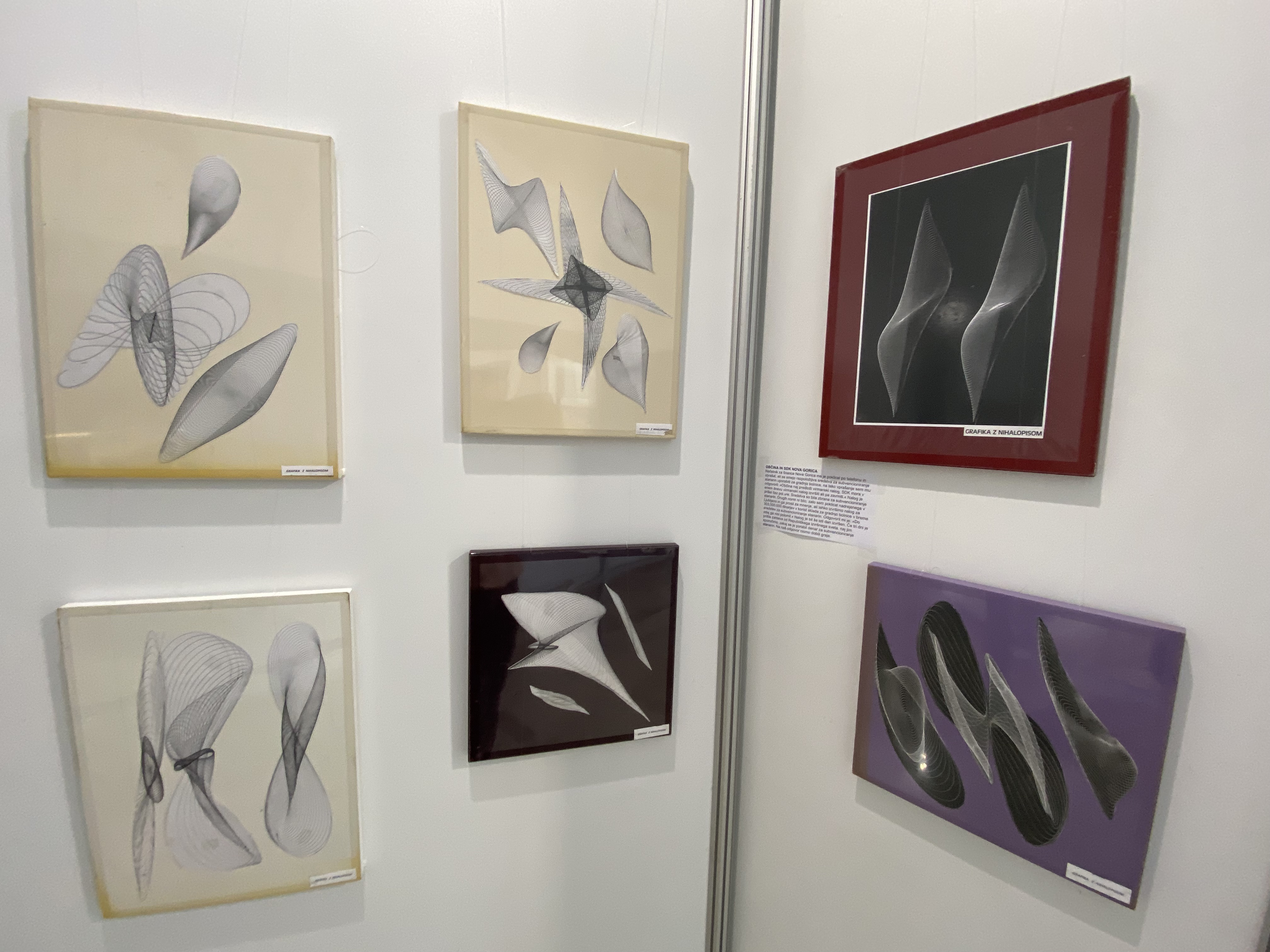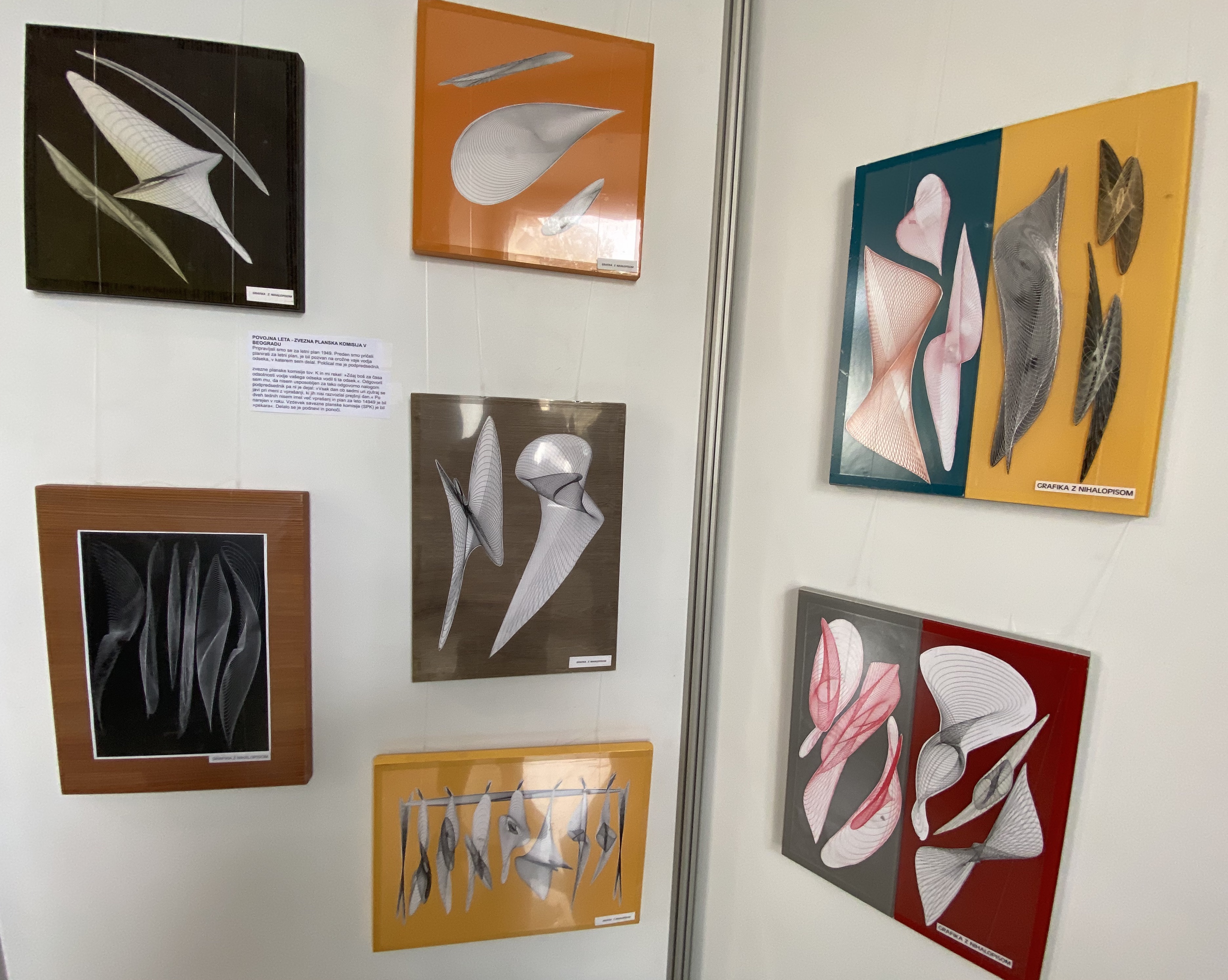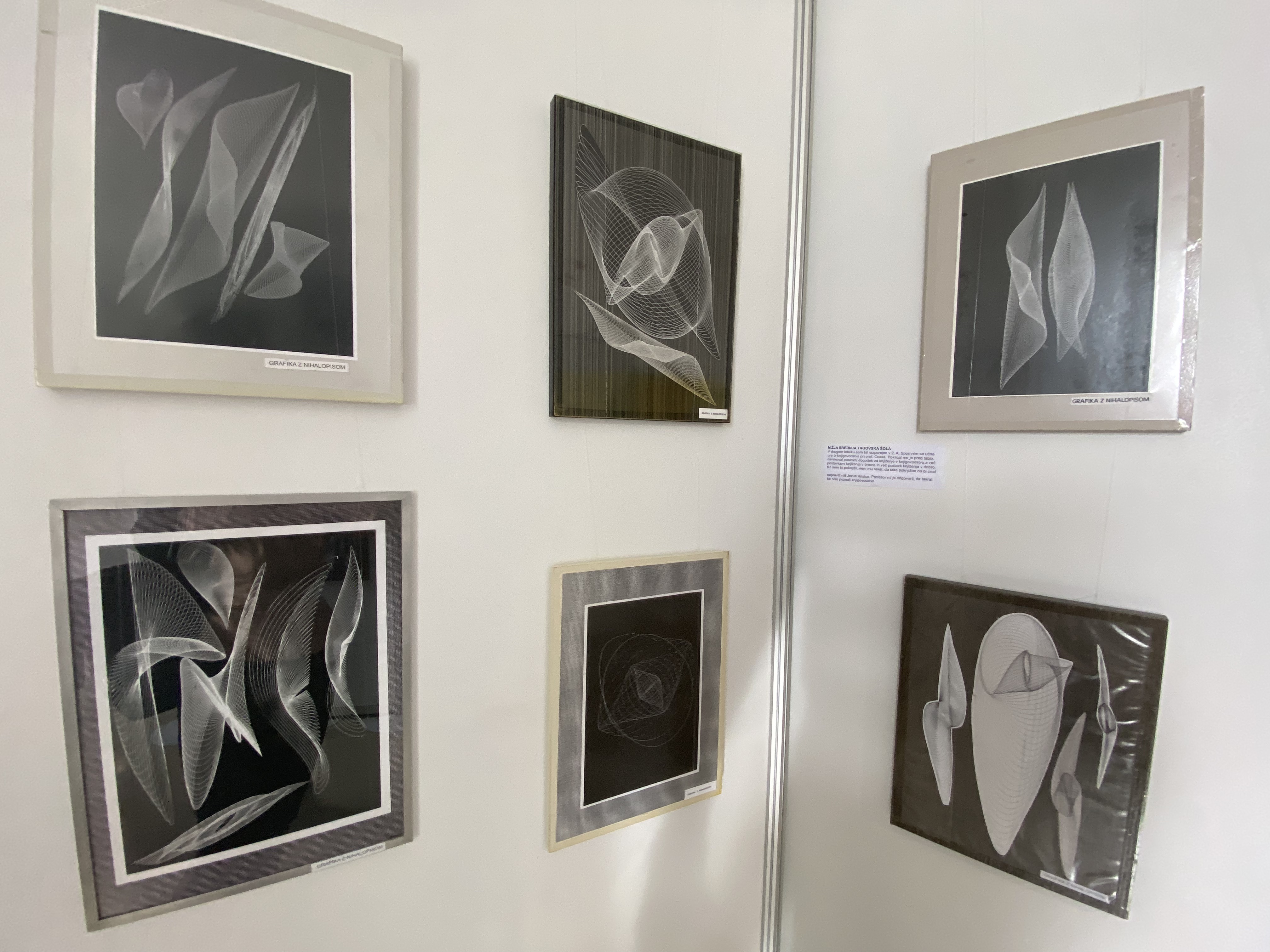Opening of the Kamil Arčon and his “Nihalopis” exhibition
Today, the opening of the exhibition "Kamil Arčon and his Nihalopis" took place at the University of Nova Gorica in Ajdovščina.
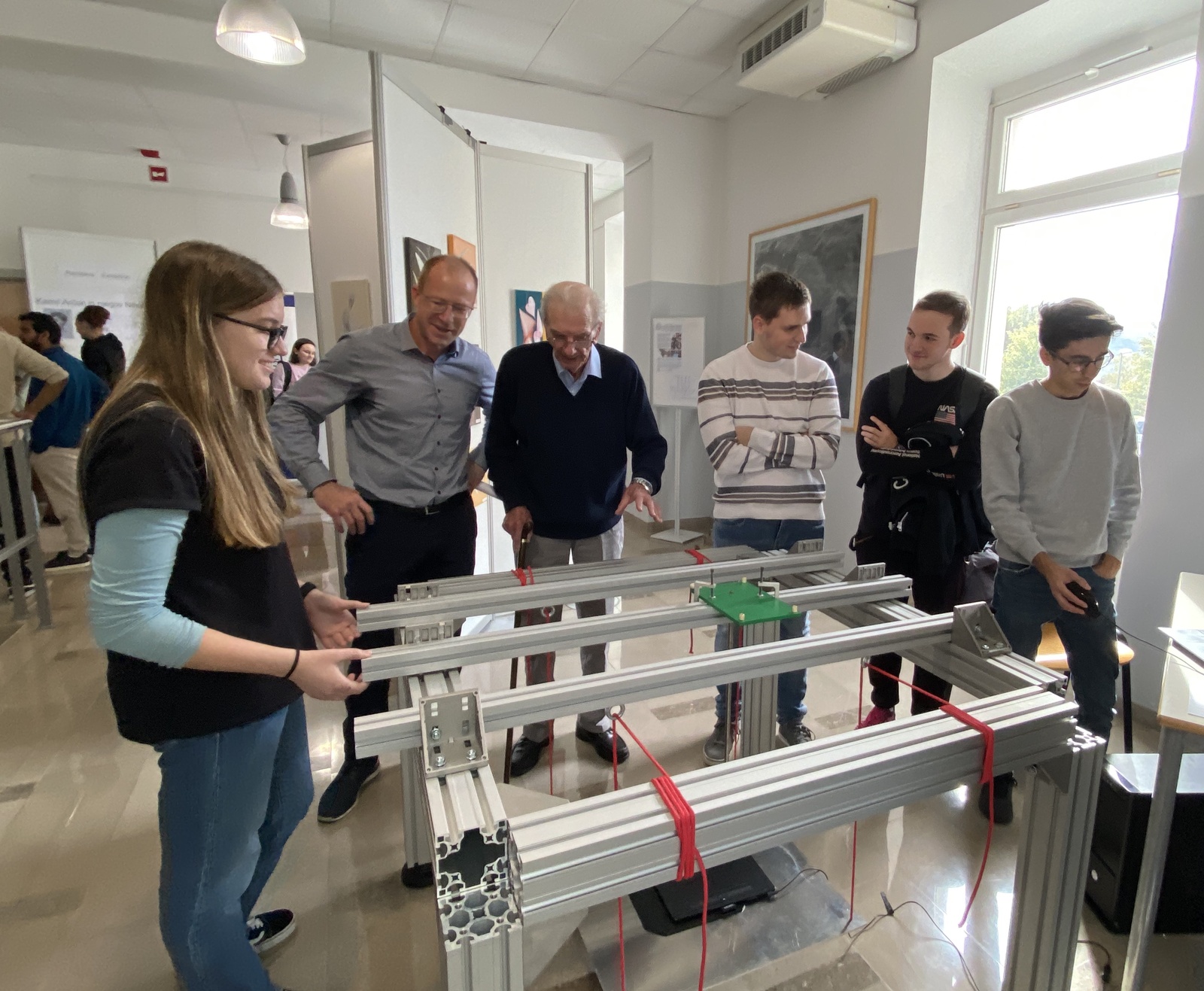
Kamil Arčon invented and constructed a simple mechanical device, the “Nihalopis”, which revealed in graphic form the beauty and symmetry of the highly complex motion of a coupled pendulum clamped at four points, all without knowing the mathematical and physical laws that determine its motion.
“We had a vine trellis in the garden. Various vegetables were sown under the trellis. To avoid trampling the vegetables I made a swing, which I hung on two cross-poles by leaning a 4-metre-long plank between the two swings. So I stepped on the plank to avoid trampling the vegetables when I was pruning the vines,” Kamil explains how he came up with the idea for “Nihalopis”.
“When I stepped from the plank, the plank moved steadily back and forth. This steady coordinated movement stayed with me, so when I retired in the 1990s, I started to think about how to make a record of the movement”.
This is how the “Nihalopis” came into being. Kamil used it to map the different modes of oscillation of this coupled pendulum. Kamil compiled the resulting curves in a script called “One Swing – One Line – One Drawing”. He has composed several artistic paintings from curves, and shown them in several exhibitions. You could say that Kamil’s life story is closely intertwined with curved lines and mathematics, which he learned by observing nature closely.
The exhibition opened on Kamil’s 96th birthday. The rector of the University of Nova Gorica, prof. dr. Boštjan Golob, congratulated Mr Arčon on his jubilee, and emphasised the interconnectedness of science and art: “At the University of Nova Gorica, we have several successful joint projects between our School of Arts and other more scientifically oriented organisational units. This exhibition is one of the most beautiful examples of the intersection of science and art, in an interface that is complex and difficult to describe; either just with art, or just with science.”
Andreja Leban, Public Relations
